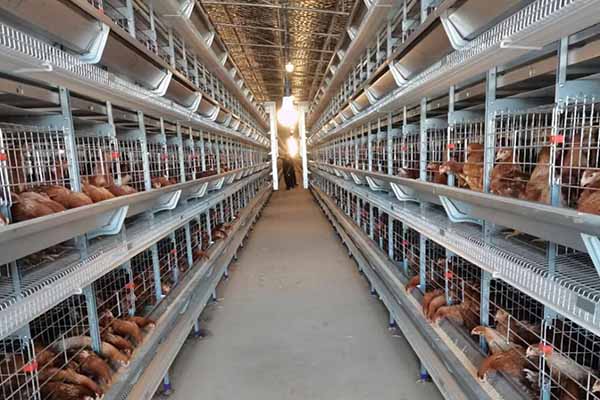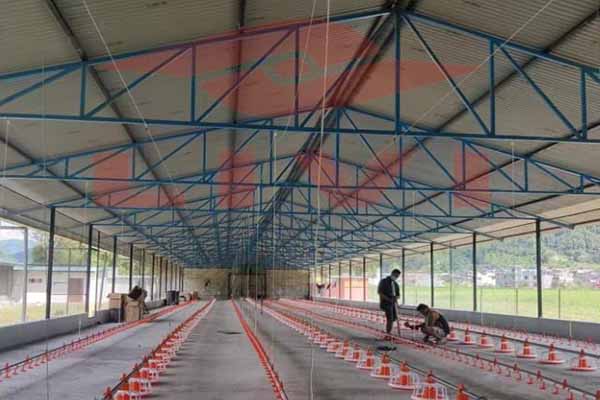Uganda Chicken Farm Automation: Equipment and Labor Cost Comparison
Time : 2025-06-26
As the poultry industry continues to evolve, the integration of automation into chicken farms has become a topic of great interest. In Uganda, a country known for its vibrant agriculture sector, the adoption of automation equipment in chicken farming is gaining momentum. This article aims to provide a comprehensive comparison of the benefits and costs associated with the automation of chicken farm equipment and labor in Uganda. By analyzing the various aspects, we hope to offer valuable insights into the feasibility and implications of automating chicken farms in the region.
Introduction to Uganda’s Chicken Farming Industry
Uganda’s poultry industry has experienced significant growth over the past decade, with the demand for chicken meat and eggs on the rise. The country’s chicken production has expanded to meet this demand, with an annual output of around 600,000 metric tons of chicken meat and 200,000 metric tons of eggs. However, this growth has not come without challenges, such as the need for increased efficiency and reduced labor costs.

The Rise of Automation in Chicken Farming
The automation of chicken farm equipment is gaining traction as a solution to the challenges faced by the poultry industry in Uganda. Automation can improve efficiency, reduce labor costs, an d enhance the overall health and well-being of the chickens. Some of the key automation equipment used in chicken farming includes:
d enhance the overall health and well-being of the chickens. Some of the key automation equipment used in chicken farming includes:
- Feeding systems
- Watering systems
- Climate control systems
- Health monitoring systems
- Chicken handling equipment
Benefits of Automation Equipment
1. Increased Efficiency: Automation can lead to a significant increase in production efficiency. By automating tasks such as feeding, watering, and climate control, farms can reduce the time and effort required to maintain optimal conditions for chicken growth.
2. Reduced Labor Costs: While automation requires an initial investment, it can result in long-term cost savings. By minimizing the need for manual labor, farms can reduce labor costs and allocate resources more efficiently.
3. Improved Animal Welfare: Automation can help ensure that chickens are well cared for by maintaining consistent environmental conditions and monitoring their health.
4. Enhanced Food Safety: Automation can minimize the risk of contamination by reducing the need for manual handling of chickens and their feed.
5. Scalability: As the demand for chicken products continues to grow, automation allows farms to scale up production without a proportional increase in labor costs.
Labor Cost Comparison: Automation vs. Traditional Methods
Compared to traditional chicken farming methods, the adoption of automation can lead to substantial savings in labor costs. Here’s a breakdown of the potential cost differences:
Traditional Chicken Farming
- High labor requirement for daily tasks such as feeding, watering, and cleaning.
- Dependence on seasonal workers, leading to fluctuating labor costs.
- Possibility of human error and inconsistencies in the care of chickens.
Automated Chicken Farming
- Reduced need for manual labor, as many tasks are automated.
- Lower dependency on seasonal workers, as automation provides consistent performance.
- Reduced risk of human error, leading to improved efficiency and animal welfare.
According to a study conducted by the World Bank, the labor cost for an automated chicken farm in Uganda can be up to 30% lower than that of a traditional farm. This cost difference is primarily due to the reduced need for manual labor and the ability to operate 24/7 without breaks or fatigue.
Challenges and Considerations

While the benefits of automation in chicken farming are clear, there are several challenges and considerations to keep in mind:
- Initial Investment Cost: The cost of purchasing and installing automation equipment can be significant, especially for small-scale farms.
- Training and Education: Farm workers may require training to operate and maintain the automated systems.
- Energy Consumption: Automated systems can consume more energy, which can increase operational costs, particularly in countries with unreliable electricity supplies.
- Waste Management: Increased production can lead to more waste, requiring effective waste management systems.
Conclusion
The integration of automation equipment in chicken farming in Uganda presents numerous benefits, including reduced labor costs, increased efficiency, and improved animal welfare. However, the decision to automate should be made with careful consideration of the initial investment, training requirements, and potential energy costs. As the industry continues to evolve, it is essential for chicken farmers to stay informed about the latest automation technologies and their potential impact on their operations.











